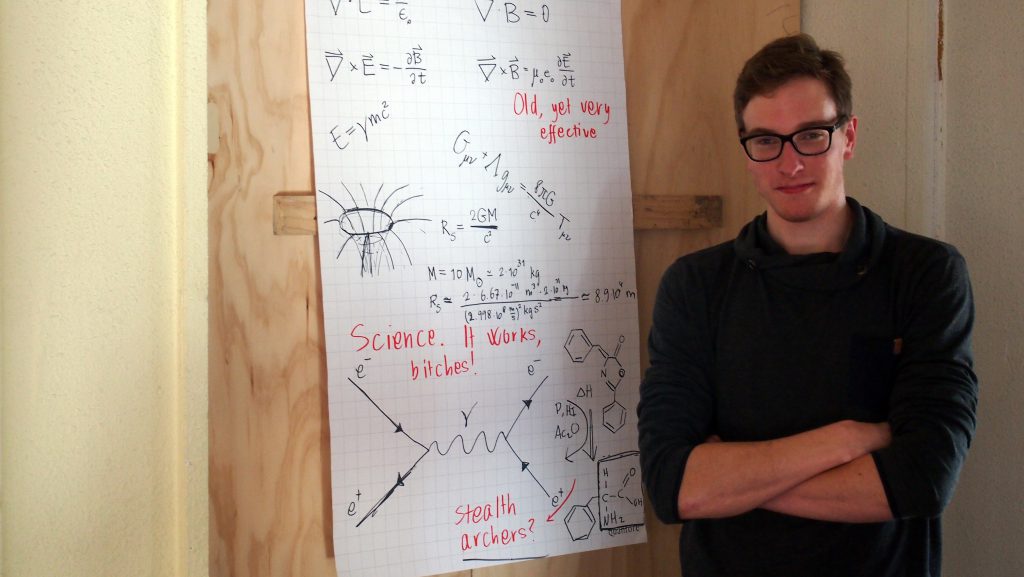Current post: Introducing: Pieter van Vliet, Senior Physics Scientist

“It’s a challenge, but a fun challenge. I like discussing theories and concepts with the others, and building a world in which others can play.”
“I’m Pieter, a BSc student of Theoretical Physics at the Groningen University. I am a member of the Lore Team of Blue Falcon, because of my knowledge of physics and interest in science-fiction.”
How did you come to work for Blue Falcon?
Through a theatre connection, I got acquainted with Logan one day. After some explanation, I told him that I was interested in his project, and a few weeks later, I was introduced to the entire group.
What’s it like working at Blue Falcon?
It’s a challenge, but a fun challenge. I like discussing theories and concepts with the others, and building a world in which others can play. We’re a collection of creative individuals, which I particularly enjoy.
From what you can discuss what is the coolest thing you’ve worked on so far?
In general, I am not attached to a single thing, rather to the entirety of the project, because it feels good to make everything connect to each other. However, if I have to name one thing, it would be the creation of the several species’ home planets and galactic internet.
What are you most excited about working on in the future?
The same thing applies here, in the sense that I am excited to see the entire concept of “The Coalition” come to fruition.
With what kind of unique challenges and rewards does your position provide you?
The challenging part of my position is that I have to vet all kinds of theories for viability. Most of the time, things do not work out the way they are supposed to. But the rewarding part is when things do work out, and when we come up with things like a galactic internet.
What does “The Coalition” galaxy look like?
“The Coalition” galaxy is the end product of the collision between the Milky Way and Andromeda galaxies. This occurred a few billion years ago and incited the rapid development of life on several planets. Five of these planets joined forces and formed “The Coalition”.
How much of this is based on real astronomy?
It is based on real astronomy, except that the Milky Way and Andromeda galaxies collided a few billion years ago, as opposed to four billion years in the future.
What kind of physics do you get to play with?
The easy parts are the mechanics, when designing vehicles, electromagnetism when designing electronics, EM drives and several others. The difficult part comes when we explore hypothetical physics, since we have to form our own rules and guidelines for the use of new technologies.
How close are you sticking to real physics?
On the small scale, we are sticking to real physics. I make sure of that. But when we get to the larger scale, we do have to cut some corners in order to make “The Coalition” work. For example, we have assumed the existence of white holes, and the possibility of Alcubierre drives. Without them, the existence of an overarching galactic government would not be viable.